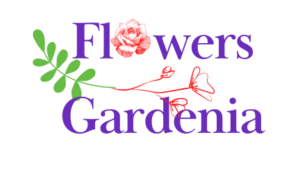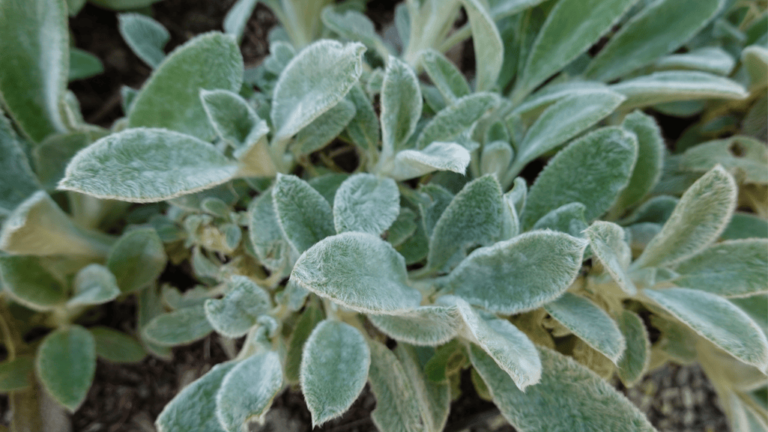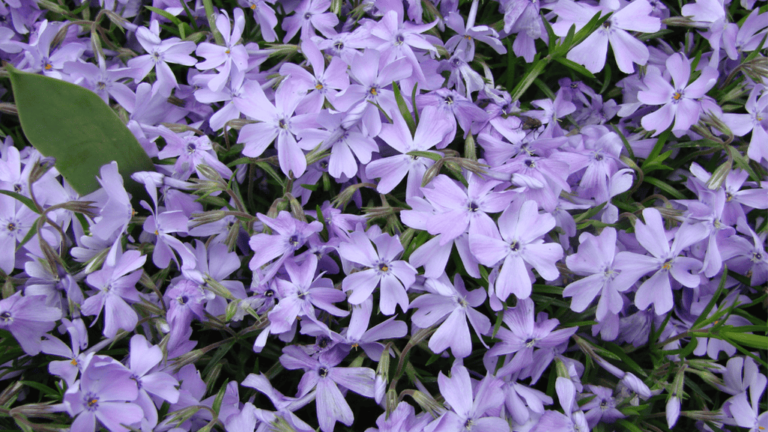Beautiful flowers gardenia Plants For Your homes

Bring the beauty of nature into your home with potted flower plants. These vibrant blooms add color and offer many benefits. They can reduce stress and purify the air, making your home a peaceful oasis.
There’s a wide variety of flowering houseplants to choose from. You can find the perfect potted blooms to match your style. Whether you love the delicate beauty of African violets or the exotic allure of anthuriums, there’s something for everyone. Plants like peace lilies and gerbera daisies bloom all year, bringing joy and inspiration.
Potted flower plants are not just beautiful; they’re also good for you. Studies show they can reduce stress, improve mood, and boost productivity. Plants like areca palms and rubber plants can even remove toxins and odors from the air, making your home healthier.
Discover the magic of potted flower plants and enjoy nurturing your own indoor blooms. With proper care, these plants will thrive, filling your home with color, fragrance, and peace. Explore the world of flowering houseplants and find the perfect companions to brighten your space.
Key Takeaways
- Potted flower plants add vibrant color and beauty to your home
- Indoor blooming plants offer therapeutic benefits, reducing stress and improving mood
- Many flowering houseplants, such as peace lilies and African violets, can bloom year-round
- Some green-leaved plants help purify the air by removing toxins and odors
- With a wide variety of options available, you can find the perfect potted blooms to suit your style and preferences
The Joy of Indoor Flowering Plants
Indoor flowering plants can turn your home into a lush oasis. They add color and life to your decor. They also boost your well-being.
Benefits of Keeping Potted Blooms Indoors
Studies show that houseplants can reduce stress and create calm. A study in the Journal of Physiological Anthropology found that people felt calmer around plants. This led to lower blood pressure.
Being around plants can also improve your mood and job satisfaction. Plants in offices boost productivity and creativity. A study with Amazon employees showed happier and more committed workers.
| Benefit | Description |
|---|---|
| Stress Reduction | Interacting with houseplants can lower stress levels and promote a calming environment. |
| Improved Cognitive Health | Being around plants can enhance cognitive function and mood states. |
| Increased Productivity | The presence of plants in the workspace is linked to increased productivity and creativity. |
| Air Purification | Certain indoor plant species, such as areca palms and rubber trees, can help purify the air by reducing airborne toxins and odors. |
Enhancing Your Home’s Ambiance with Colorful Flowers
Indoor flowers can brighten any room, making it more inviting. They add a natural touch to your home. By placing colorful plants around, you can create a beautiful space that reflects your style.
Houseplants are like living sculptures that can transform a cramped space into an oasis.
Choose plants that match your style. Popular indoor flowers include:
- African Violets
- Orchids
- Peace Lilies
- Bromeliads
- Kalanchoes
Adding these plants to your home makes it more welcoming. It shows your love for nature and improves your well-being.
Choosing the Perfect Potted Flower Plants
Choosing the right flowering potted plants for your home is important. Think about what you want and what fits your style. This way, your home will be filled with beautiful flowers that match your taste.
Factors to Consider When Selecting Indoor Flowering Plants
When picking indoor flowers, consider a few things:
- Light requirements: Make sure the plant needs match your home’s light.
- Watering needs: Pick plants that fit your watering schedule.
- Size and growth habit: Choose plants that fit your space and style.
- Blooming period: Pick plants that bloom at different times for color all year.
Look for plants with more buds than open flowers. This means they’ll bloom longer at home. Also, check the plant for health and pests before buying.
Popular Varieties for Every Style and Taste
There are many flowering plants for every taste and style. Some favorites include:
| Plant Name | Bloom Color | Light Requirements | Watering Needs |
|---|---|---|---|
| African Violets | Purple, pink, white | Bright, indirect light | Keep soil consistently moist |
| Peace Lilies | White | Low to bright, indirect light | Water when top inch of soil feels dry |
| Anthuriums | Red, pink, white | Bright, indirect light | Allow soil to dry between waterings |
| Orchids | Various colors | Bright, indirect light | Water weekly, allowing excess to drain |
| Bromeliads | Red, pink, orange, yellow | Bright, indirect light | Fill central cup with water, keep soil lightly moist |
By picking the right potted plants, you can make your home beautiful. With the right care, these flowers will bring joy and beauty for months.
Creating the Ideal Environment for Your Potted Blooms
To make your indoor plant decor flourish, you need to create the perfect setting. Potted plants need the right light, temperature, humidity, and soil. This ensures they grow well and add beauty to your home with their blooms and leaves.
Lighting Requirements for Optimal Growth and Flowering
Light is key for your potted plants’ health. Most can handle different light levels, but knowing what each needs is vital. For example, African violets bloom for years in the right spot, while chrysanthemums bloom all year with care.
To learn more about creating the ideal environment for your plants at home, visit Be.Green for helpful tips and guidance.
Temperature and Humidity Considerations
Keeping the right temperature and humidity is also key. Different plants like different conditions. For instance, African violets like cooler nights and warmer days, while azaleas prefer cooler temperatures.
Calceolarias do best in cool temperatures, needing night temperatures around 50-55°F.
Selecting the Right Potting Mix and Containers
Choosing the right potting mix and containers is vital for your plants. A good potting mix prevents waterlogging and root rot. Containers with drainage holes let water out.
When picking ornamental pots, choose ones that are three inches bigger than the plant’s roots. This prevents the plant from becoming pot-bound. For more info on caring for specific plants, like amaryllis, visit Flowers Gardenia.
| Plant | Optimal Temperature Range | Lighting Requirements |
|---|---|---|
| African Violets | 65-70°F (night), 75-80°F (day) | Bright, indirect light |
| Azaleas | 60-65°F | Bright, indirect light |
| Chrysanthemums | 60-70°F | Full sun to partial shade |
| Calceolarias | 50-55°F (night) | Bright, indirect light |
By considering light, temperature, humidity, and soil, you can create the perfect home for your potted ornamentals. With proper care, your plants will bloom beautifully, making your home vibrant and welcoming.
Watering and Fertilizing Your Potted Flower Plants
Keeping your houseplant flowers and decorative potted bloomers thriving requires proper watering and fertilizing techniques. It’s important to find the right balance when watering your potted botanical displays. Too much water can cause root rot and other problems. Container gardening flowers have different needs than those in the ground, so adjust your care routine accordingly.
To check if your plants need water, stick your finger into the soil up to the first knuckle. If it’s dry, water until water drains from the pot’s bottom. Don’t let your plants sit in water, as this can cause root rot. You might need to water your plants every week to daily, depending on the size of the pot, the type of plant, and the environment.
Over-watering is the most common cause of early plant death, affecting 90% of plants. Proper watering includes saturating the entire root zone until water drains out of the pot’s drainage hole.
Fertilizing your potted flower plants is also key for their health and blooms. Most container plants do well with a balanced, water-soluble fertilizer every 7 to 10 days during the growing season. You can also use a slow-release fertilizer once a season for a steady nutrient supply.
| Fertilizer Type | Application Frequency | Benefits |
|---|---|---|
| Water-soluble | Every 7-10 days | Quick nutrient uptake, easy to adjust dosage |
| Slow-release | Once per season | Provides steady nutrient supply, less frequent application |
| Organic (fish emulsion, kelp) | Monthly or as directed | Gentle on plants, improves soil health |
Choose a fertilizer with a balanced N-P-K ratio for overall plant health and flowering. Some plants, like flowering annuals or fruits, might need more phosphorus for blooming and fruiting. Always follow the instructions to avoid over-fertilizing, which can harm your plants.
- Water your potted flower plants when the top inch of soil feels dry to the touch.
- Fertilize regularly with a balanced, water-soluble fertilizer or slow-release granules.
- Adjust watering and fertilizing frequency based on plant type, pot size, and environmental conditions.
- Avoid letting your plants sit in standing water or over-fertilizing, as both can lead to root damage and other issues.
By giving your houseplant flowers and decorative potted bloomers the right care, you’ll enjoy vibrant, long-lasting blooms. These blooms will brighten your home and bring joy to your daily life.
Pruning and Maintenance Tips for Healthy Blooms
To keep your potted flower plants thriving, regular pruning and maintenance are key. Deadheading spent flowers is crucial. It helps the plant focus on new blooms and keeps it looking neat. This is especially important for annuals like calibrachoa, supertunia, and alyssum in container flower displays.
Deadheading and Pinching Techniques
When deadheading, remove the entire spent flower, including the stem, back to the nearest leaf or bud. This encourages new growth and blooms. Pinching back leggy stems helps plants grow bushier and more compact, perfect for mini greenhouses or potted arrangements.
Here are some tips to keep your potted flowers healthy and looking good:
- Trim plants as needed, removing any yellowing or dead foliage
- Keep plants clean and free of debris
- Monitor plants daily for signs of pests or disease
- Use a DIY spray or neem oil for pest deterrence and treatment
Repotting and Dividing Your Plants
When your potted flowers outgrow their containers, it’s time to repot them. Use slightly larger pots with fresh potting mix. This lets the roots grow and get more nutrients, helping the plants thrive. Plants like African violets and peace lilies also benefit from division, which creates new plants and refreshes the parent plant.
When repotting or dividing, consider these factors:
| Factor | Consideration |
|---|---|
| Pot size | Choose a pot that is 1-2 inches larger in diameter than the current container |
| Drainage | Ensure the new pot has adequate drainage holes to prevent root rot |
| Potting mix | Use a well-draining, nutrient-rich potting mix suitable for your specific plant |
| Timing | Repot or divide plants during their active growing season, typically spring or summer |
By following these tips, your potted flower plants will stay healthy and blooming. Regular care and attention will help you create beautiful potted bloom arrangements. These arrangements will brighten up your home and bring joy to everyone who sees them.
Dealing with Common Pests and Diseases
Even the best home flower gardens and potted floral decor can face pests and diseases. To keep your blooming botanical pots healthy, watch for problems and fix them fast.
Identifying and Treating Infestations
Pests like spider mites, mealybugs, fungus gnats, whiteflies, and aphids can harm your plants. Check your plants often for signs of pests. Penn State Extension says spider mites love dry air and show up when it gets humid.
If you find pests, treat them quickly. Use clean water to wash them off and approved pesticides to spray. For small infestations, remove pests by hand or use rubbing alcohol-soaked cotton swabs.
| Pest | Appearance | Damage |
|---|---|---|
| Aphids | Usually green, but can vary in color; 1/16 to ⅛-inch long | Suck plant sap, causing distorted growth |
| Mealybugs | Small, pale insects; ⅛ to ¼ inch long; move sluggishly | Suck plant sap, causing yellowing and leaf drop |
| Spider mites | Tiny, spider-like creatures; leave silky webbing | Suck plant sap, causing speckling on leaves |
Preventive Measures to Keep Your Potted Flowers Thriving
Keeping your plants healthy starts with prevention. Diseases like Botrytis and soft leaf spot can happen in damp places. Remove sick parts, ensure air flows, and avoid watering plants too much.
Use insecticidal soap to fight pests like aphids and spider mites. Ferti-lome Triple Action Plus is a good choice for pests and diseases. It’s safe for many plants, including fuchsias and roses.
Always use pesticides wisely, aiming for the right pests. You might need to apply them more than once.
By being proactive and quick to act, your potted plants will stay healthy and bright. They’ll keep your home gardens beautiful and full of life.
Encouraging Reblooming in Your Potted Flower Plants
Many potted flowers and balcony plants can bloom again with the right care. After they first bloom, removing dead flowers and cutting back can help new buds grow. This is especially good for annuals like salvias, zinnias, and perennial coneflowers, as well as repeat-blooming roses.
Removing yellow or damaged leaves also helps plants focus on making more flowers. Regular care like deadheading, trimming, and feeding keeps balcony gardens looking great all season. For example, zinnias can bloom until October if you keep removing dead flowers. Rudbeckia hirta (Black-eyed Susan) also blooms more if you deadhead it and fertilize it.
Some plants, like Christmas cactus and kalanchoe, need special conditions to bloom again. It’s key to know what your plants need to bloom well. Make sure they get the right light, water, and food for healthy growth and flowers.
High middle number fertilizers (e.g., 10-54-10) encourage flower formation and root development in plants like zinnias and hydrangeas.
Perennial plants like tickseed and wild geranium can bloom again if you deadhead or cut them back. But, some plants, like astilbe, Siberian iris, peonies, and poppies, only bloom once because of their nature.
Roses, especially shrub types like hybrid tea and floribunda, should have dead flowers removed to bloom again. Some roses, like the ‘Knock Out’ series, don’t need deadheading to keep blooming. For climbers or ramblers that bloom once, prune them right after to get new flowers.
| Plant Type | Reblooming Techniques |
|---|---|
| Annuals (e.g., salvias, zinnias) | Deadheading, trimming, fertilizing |
| Perennials (e.g., coneflowers, tickseed, wild geranium) | Deadheading, cutting back |
| Roses (hybrid tea, floribunda) | Removing spent flowers regularly |
| Self-cleaning roses (e.g., ‘Knock Out’ series) | No deadheading required |
| Climbers or ramblers | Pruning immediately after flowering |
By using these reblooming tips and giving your plants the right care, you can have beautiful flowers all season. This will make your balcony garden even more enjoyable.
Displaying Your Potted Blooms for Maximum Impact
Showing off your potted flowers can really change how your indoor garden looks. By arranging them in creative ways and matching them with decor, you can make your space feel lush and welcoming.
Creative Ways to Arrange Your Indoor Flowering Plants
Creating a beautiful indoor garden starts with how you group your plants. Here are some tips for arranging your flowers:
- Match plants by color and texture for a nice look. For example, Angelonia ‘Angelface Dresden Blue’ and Nemesia ‘Blue Bird’ make a beautiful contrast.
- Use different pot sizes and styles to add interest. Mixing shapes and materials makes your display more dynamic.
- Put taller plants in the back and shorter ones in the front. This creates a balanced look, especially on shelves or windowsills.
- Use hanging baskets, stands, or wall planters to save space. This makes your garden look lush without taking up too much room.
For container sizes, here’s a general rule: three or four plants in 10 to 12-inch pots, four to six in 14 to 16-inch pots, and six to eight in 16 to 20-inch pots. But, some plants like Supertunia Petunias can fill a 14-inch pot with three plants. Other plants, like pansies, might need more to look full.
| Container Size | Number of Plants | Example Combinations |
|---|---|---|
| 10-12 inches | 3-4 plants | 5 pansies in a cool-season flower pot |
| 14-16 inches | 4-6 plants | 3 Supertunia Petunias for a full, spreading look |
| 16-20 inches | 6-8 plants | 6 varieties of peperomia for a diverse foliage display |
Pairing Potted Flowers with Complementary Decor
To make your potted flowers even more stunning, pair them with decor that complements them. Here are some ideas:
- Choose pots that match your plants’ colors and styles. For example, a modern planter looks great with calibrachoas’ delicate blooms.
- Add macrame hangers or woven baskets for a bohemian vibe. These natural textures enhance your plants’ organic beauty.
- Place botanical art or photos near your plants for a cohesive, nature-inspired look in your home.
“The beauty of potted flower plants lies not only in their vibrant blooms but also in the way they are displayed. By arranging your container-grown flowers creatively and pairing them with complementary decor, you can create a stunning indoor oasis that brings joy and tranquility to your home.”
With a bit of creativity and attention to detail, you can turn your potted flowers into a stunning display. This will enhance your home’s ambiance and beauty.
Gifting and Sharing Your Love of Potted Flower Plants
Sharing your love for indoor potted blooms is a great way to spread joy and beauty. Giving ornamental potted plants for special occasions or just to brighten someone’s day can spark a love for gardening. Think about the recipient’s lifestyle, taste, and plant care experience when choosing the perfect blooming potted plant.
Choosing the Perfect Blooming Plant for Every Occasion
For birthdays, housewarmings, or holidays, a flowering plant in a stylish planter box is a thoughtful gift. Here are some popular choices for different occasions and people:
| Plant | Price | Ideal For |
|---|---|---|
| Calathea ‘Medallion’ | $30 | Plant enthusiasts who appreciate unique foliage |
| Rattlesnake Plant (Calathea Lancifolia) | $18 | Those who enjoy watercolor-like markings on leaves |
| Sansevieria Snake Plant | $52 | Beginners; known for easy care and oxygen release |
| Costa Farms ZZ Plant | $18 | Frequent travelers; drought-tolerant with glossy leaves |
| Pilea Peperomioides (Chinese Money Plant) | $38 | Those who enjoy propagating and multiplying plants |
“Plants make us feel less stressed and more creative. When we look at a plant, it connects us back to nature, which is where we come from.”—Tara Heibel, Sprout Home
Propagating and Sharing Your Favorite Varieties with Friends and Family
As you get better at caring for your indoor potted blooms, you might want to share your favorites. Many plants can be easily propagated through division, stem cuttings, or leaf cuttings. This way, you can create new plants to share, building a sense of community and spreading the joy of indoor gardening.
Some useful tools and products for propagating and sharing plants include:
- Southside Plants Crazy Keiki Cloning Paste for stimulating new growth
- Gardener’s Supply Company Paper Pot Maker for creating seed pots
- Rooted Assorted Bundles offering a variety of houseplants with similar care needs
By gifting and sharing your love of ornamental potted plants, you enrich others’ lives and grow the plant enthusiast community. It’s a chance to connect with others through the beauty and joy of indoor potted blooms.
Conclusion
Potted flower plants bring vibrant blooms and natural beauty into your home. There are many flowering houseplants to choose from, fitting every style and gardening level. With the right care, you can enjoy potted blooms all year.
For indoor plants to thrive, they need the right light, temperature, and humidity. A good potting mix and regular care are key. Watch for pests and diseases, and act fast to keep your plants healthy.
Displaying your potted plants can make your home even more beautiful. Whether you love plants or are just starting, enjoying flowering houseplants is rewarding. So, fill your space with potted blooms and enjoy the beauty they bring!



















